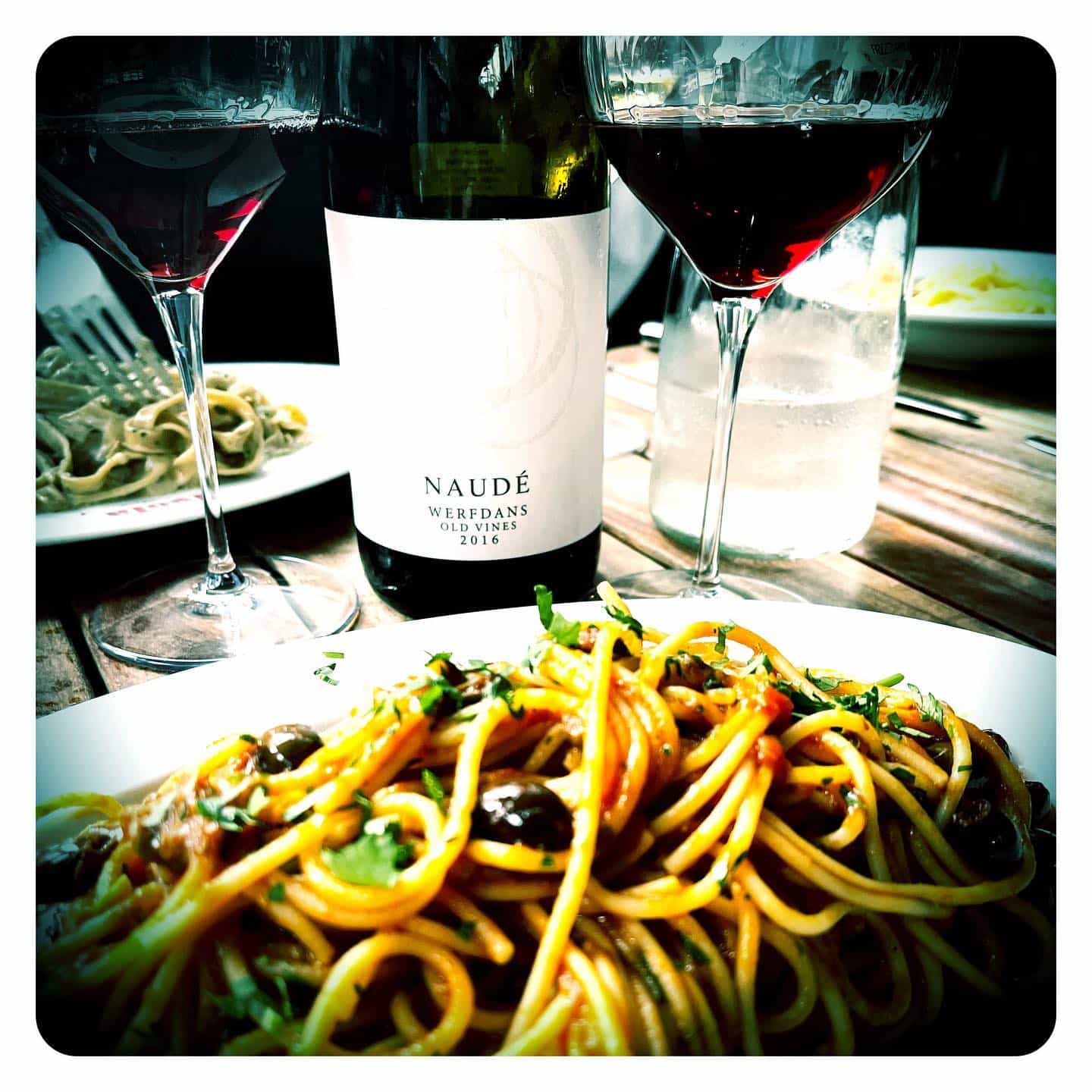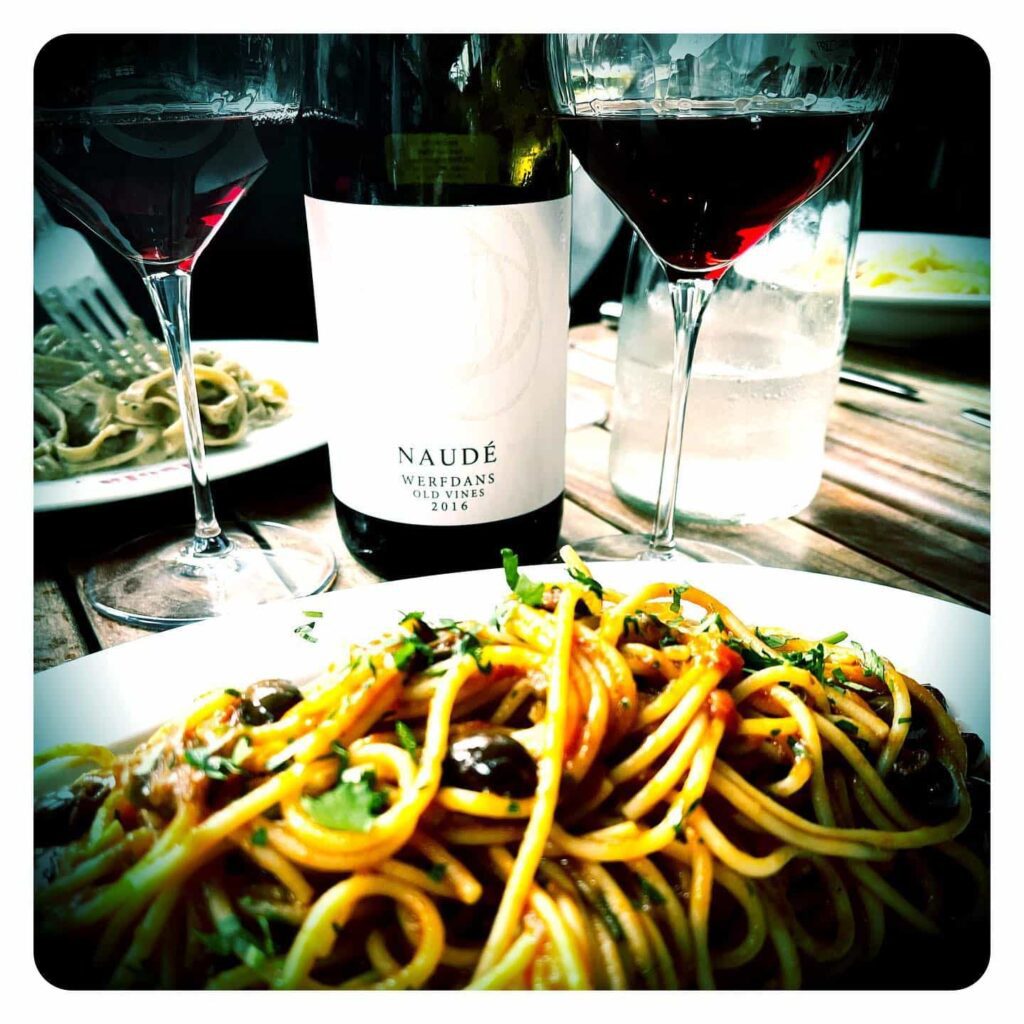
It probably won't be a huge surprise to most people that I drank more than a few bottles of South African Cinsault this Christmas. Now I know that my last column presented the fine wine gourmand conundrum of whether you should choose Pinot Noir or Pinotage with your Christmas turkey, but of course, I had to include Cinsault in that equation too. Quite simply, in the last year or two this variety has taken on a life of its own in independent UK retail as well as on the UK trade, and quantities of wine are being sold at all levels of price and quality. Absolutely amazing. If my own consumption habits of excellent Cinsault and those of my close friends in the UK wine trade are anything to go by, the current shortage in the UK market is certainly easily explained.
I am of course a bit old school now and cannot mention Cinsault without recounting (once again) my experience at the 1997 Cape Wine Academy introductory tasting in Pretoria with my then lecturer, Glenn de Jager, where we tasted a range of Cinsault commercial wines, all from and In my honest opinion, it tasted like rusty nails fermenting in a jam jar. Definitely sweet and sour, tart and undeniably mineral, with exotic layers of sweet berry fruit. The irony is that the wine we were tasting was probably produced by large cooperatives making Cinsault from vines more than 30 to 40 years old in Swartland, Darling or Stellenbosch. How they got it wrong is anyone's answer.
Even today, when consumers ask me to explain the remarkable jump in quality from the commercial start of the 1980s to the quality of the current fine Cinsault wine available today, I struggle, and seem at a loss, to concisely explain this real phenomenon. And it's not like I didn't ask my good winemaker friends like Ian Naudi, Duncan Savage, and Eben Sadie about what everyone was doing in the vineyard and winery then, and what they're all doing differently now. Surely I have asked this question over and over again. However, the answers do not simply explain the complete lack of quality produced by some very large and commercially experienced wineries of the time…wineries that, I might add, were able to produce some very respectable examples of Syrah and Cabernet Sauvignon.
While some of the Cinsault buzz in the UK can perhaps be explained by recent rock star Cinsault visits at the end of 2022 by the likes of Sadie, Naudé and Lukas van Loggerenberg, this would only explain the excitement within and among wine trade experts. And certainly not among ordinary consumers. The thirst and even perceived obsession for ancient Cinsault trees in the UK is quite real and exciting. It's everything the producers hoped for and more. If you think I'm being a bit dramatic in my comment, I suggest you talk to South Africa's only UK-based wine expert who works at the famous 3-star Michelin restaurant, Core by Clare Smyth. Gareth Ferreira MS reassuringly told me that, over the past several months, he has chopped a Naudé Werfdans 2016 Old Vine Darling Cinsault by the glass with one of his main tasting menus and the response has been simply amazing. When speaking further with their importer Museum Wines to get more background information, they also seemed to have been a little taken aback by the sudden rush for light, elegant, fresh and fragrant Cinsault-style wines.
Museum Wines also happens to be the exclusive UK importer for another iconic proponent of Cinsault from the Cape, Alex Milner of Natte Valleij, and from my discussions with Alex and his importer, the scenario is almost no different from that of Naude Wines. Massive shortages – despite a lot of forecasting and inventory planning. So what's going on? Poor planning? Shipping delay? Uneven market demand? No, that seems to be the correct answer. Simply put, there is an unbridled demand for a lighter, fresher, purer style of wine that can replace Pinot Noir when needed, and a style of wine that can pair with a variety of foods, especially lots of fall fairs including grouse, pheasant and of course Christmas Türkiye.
On a recent luxury wine outing with my very good friend, Daniel Primack, the UK importer of Zalto eyewear, I of course brought along a bottle of his favorite wine…the Sadie Family Old Vine Series Pofadder Cinsault. Being invited to his private members club was more than enough incentive to dig deep into my basement and salvage one of the last precious bottles of Pofadder 2012 Cinsault. Drinking this coveted wine at age 10 is an example of why this wine is not found in the ranks of Pinotage but among the celebrities of Pinot Noir when it comes to prestige and commercial placement. Eden Sadie and of course Ian Naude have been huge supporters of the grape, but there is a growing group of producers, some young and some older, who are increasingly pinning their colors on the banner of the Cinsault battlefield.
As for my recent Cinsault experiences, for what it's worth… The 2016 Naudé Werfdans remains a seminal wine for me in the evolution of quality old vine Cinsault in South Africa, and the Winemag editor's high score (95/100) goes a long way to support my argument there. As for Alex Milner's incredibly delicious expressions, perhaps I've learned not to judge a mullet by its variety. This boy has been cleaning up the UK market, and at the time of going for copies, his Cinsault was “very annoyingly out of stock” according to his importer Daniel Greig at the Wine Museum. Inevitably, the Sadie Wines Pofadder family, well, I'm sure you can guess, that unless you have had the foresight or exceptional luck to secure an allotment in recent years, you will unfortunately have to go thirsty when it comes to this rare old vine Cinsault. This wine may still not be at the rabid demand levels of Eben Sadie's Soldaat Grenache just yet, and this was no doubt trumping the reputation and growing international reputation of the high-altitude ancient Gredoat Grenache region to the west of Madrid, but it is rare and sought after for remaining Pofadder Cinsault wine.
The skies over London for the coming months are expected to be gray and icy, but I can tell you that the opportunities for South Africa's best Cinsaults have never been brighter. The buzz for the general trade is unparalleled, demand among independent retail buyers has never been stronger, and excitement, interest and curiosity among sommeliers, chefs and restaurateurs is at an all-time high. If I were a stockbroker right now, I would definitely invest a significant amount of capital in Cinsault stock!
Greg Sherwood was born in Pretoria, South Africa, and as the son of a career diplomat, he spent the first 21 years of his life traveling the world with his parents. Sherwood holds a degree in Business Administration and Marketing from Webster University, St. Louis, Missouri, USA, and began his career as a commodities trader. In 2000, he decided to have a long-term interest in wine and took a position at Handford Wines in South Kensington, working his way up to the position of Chief Wine Buyer. He became master of wine in 2007.


